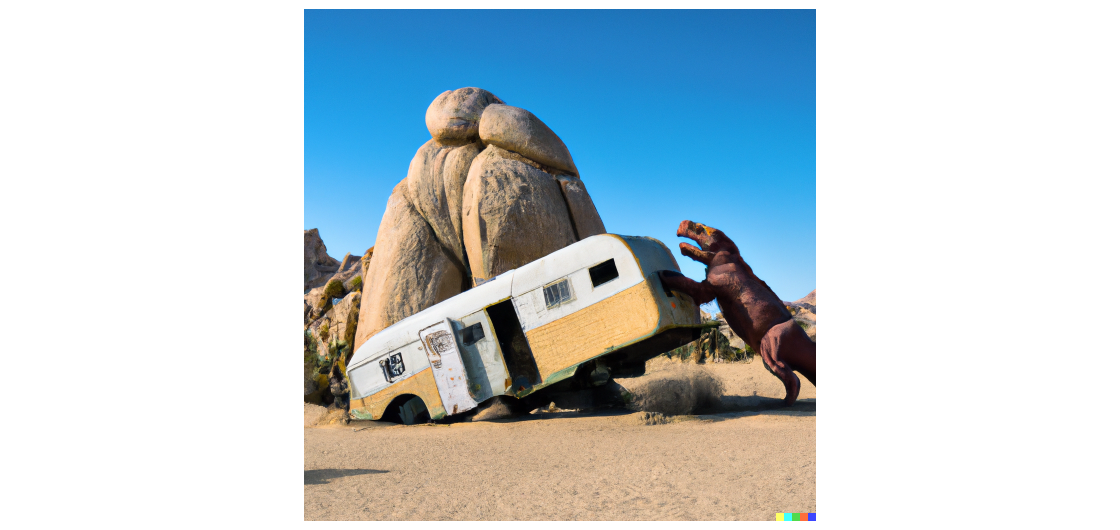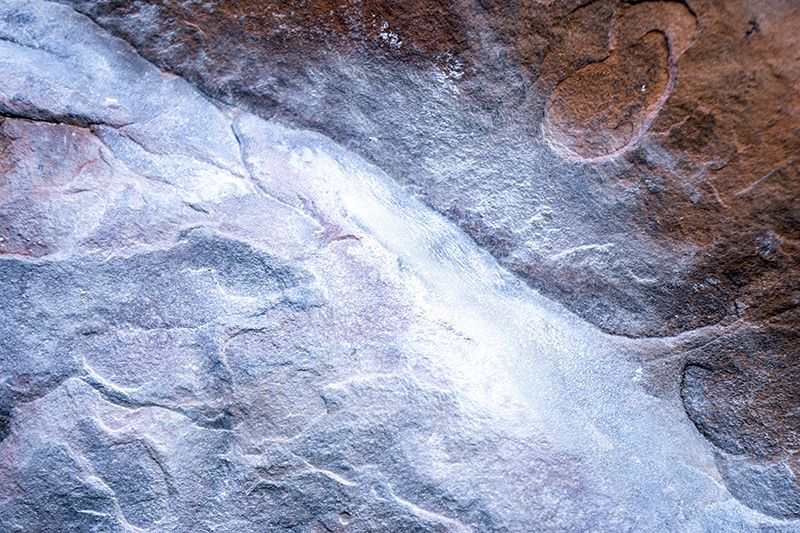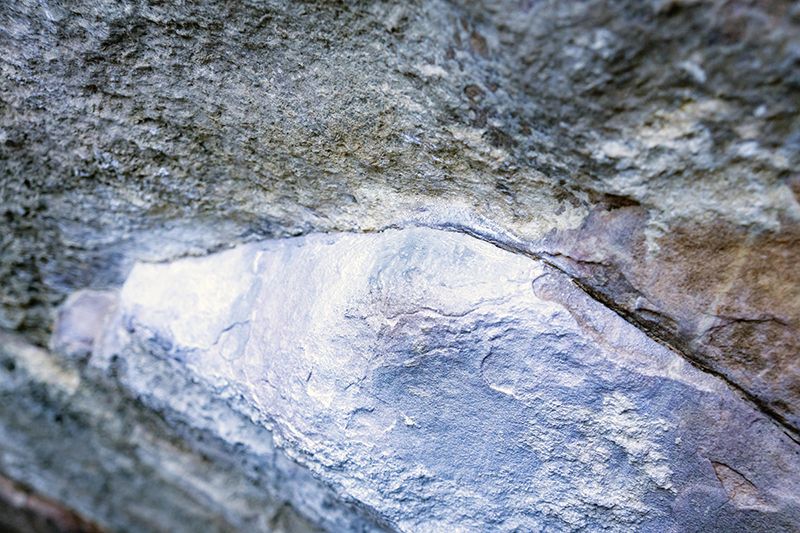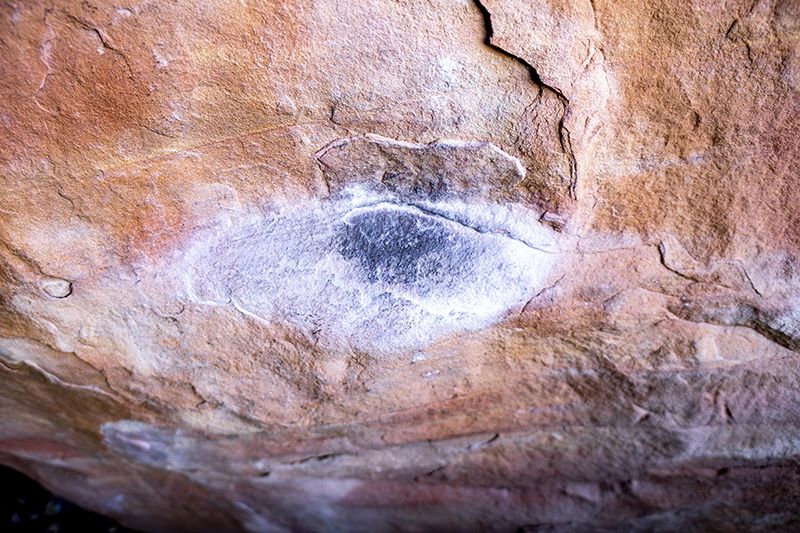
Expedition Report: USA Rock Retrospective
On our return to Joshua Tree the team launched full noise into crack climbing under the tutelage of Aotearoa’s finest trad climber: Jonty Francis. Francis showed the way on crack classics such as O'Kelly's Crack and a near miss on Heart of Darkness (each 5.11a/22). Both Alec and I, inspired by Jonty’s traditional expertise, followed suit and managed to jam our way up what were in reality remarkably easy trad routes. With the backs of our hands suitably bruised and scarred we took a break from masochism and returned to bouldering. Joshua Tree is an overwhelmingly terrible bouldering area, but luckily the vast quantity of rock results in a few statistical anomalies (strongly outweighed by ball bearing choss). The king line of these being Sharma’s Iron Resolution (V12), a block that rolled out of the cliff, landed at 45 degrees and somehow boasts a plum line of patinated crimps sitting above a perfect sandy landing. Only in the land of endless rock does this kind of miracle occur.
Henceforth the bouldering team (Francis wandered into the desert to solo cracks) went to work on Iron Resolution, looking for one last tick in the land of ticks (both long and white and small and many legged). Firstly, Matt rigged the top rope and commenced the ‘de-seshing’ of Iron Resolution, luckily the CHB brush’s infamous bristle density was able to pry off the previous sesher’s thick crust of chalky residue. Primed with the prior knowledge of a session on our previous trip, Matt and I ascended in quick stylish fashion, and Alec, not one to be left out, pulled out an impressive single session ascent. Following this stellar display of Alec’s climbing talent, he then performed the ritual of scrubbing up after the team and we called it a day.
I’ve told this tale in part because I think it's a neat little story of joint success and it's also a good segue into somewhat of a rant about the result of ‘seshes’ such as ours on Iron Resolution. What follows is one Kiwi’s entirely subjective opinion of the state of climbing (and specifically the rock itself) in America.
 The USA is the land of the enormo; massive cars, endless strip malls and super sized people, all of which were bigger than I was expecting (although the people were made tiny inside the cabs of their six wheeler super duty trucks). Fortunately, this sense of enormity is reflected in the scale of the landscapes; there's many, many lifetimes of climbing in the vast deserts and mountain ranges of the States. Despite this overwhelming quantity, the culture of climbing has funneled a disproportionate amount of chalky hands and boots onto a surprisingly small number of boulders. This trend can be attributed in part to the influence of media and the appeal of chasing high grades. In particular, problems graded V10 and up in Red Rocks have seen the bulk of the traffic, while V6’s often remain untouched. While I accept people climb a lot harder abroad, I think it's fair to assume the median grade is not V10.
The USA is the land of the enormo; massive cars, endless strip malls and super sized people, all of which were bigger than I was expecting (although the people were made tiny inside the cabs of their six wheeler super duty trucks). Fortunately, this sense of enormity is reflected in the scale of the landscapes; there's many, many lifetimes of climbing in the vast deserts and mountain ranges of the States. Despite this overwhelming quantity, the culture of climbing has funneled a disproportionate amount of chalky hands and boots onto a surprisingly small number of boulders. This trend can be attributed in part to the influence of media and the appeal of chasing high grades. In particular, problems graded V10 and up in Red Rocks have seen the bulk of the traffic, while V6’s often remain untouched. While I accept people climb a lot harder abroad, I think it's fair to assume the median grade is not V10.
 This excessive overuse all comes down to the ‘sesh’, Bro’s sesh hard in the USA, real hard. A sesh is defined by a long session on a boulder by a boulder bro (in this context, ‘bro’ refers to an Aamerican frother of any gender) they proceed to bang their head against the wall all day, making incremental progress and leave this sesh without brushing any excess chalk or ticks off. The effects of the sesh are rock dependent; granite seems to hold up somewhat well to the sesh, and in some cases traffic improves the rock quality; removing the layer of ball bearings on the rock at both Bishop and J-Tree. The most severe results of the sesh were on the ridiculously soft sandstone of Red Rocks, this seems somewhat fitting, given the proximity to the apocalyptic Las Vegas. The three classic V12’s of Black Velvet Canyon are no longer the sculptures their first accessions clambered up, they are encrusted with enormous quantities of chalk and rubber, and have lost both tactile and aesthetic appeal as a result. When I questioned American climbers on this, they almost all responded with a dumbfounded look and replied, ‘but they are still climbable’.
This excessive overuse all comes down to the ‘sesh’, Bro’s sesh hard in the USA, real hard. A sesh is defined by a long session on a boulder by a boulder bro (in this context, ‘bro’ refers to an Aamerican frother of any gender) they proceed to bang their head against the wall all day, making incremental progress and leave this sesh without brushing any excess chalk or ticks off. The effects of the sesh are rock dependent; granite seems to hold up somewhat well to the sesh, and in some cases traffic improves the rock quality; removing the layer of ball bearings on the rock at both Bishop and J-Tree. The most severe results of the sesh were on the ridiculously soft sandstone of Red Rocks, this seems somewhat fitting, given the proximity to the apocalyptic Las Vegas. The three classic V12’s of Black Velvet Canyon are no longer the sculptures their first accessions clambered up, they are encrusted with enormous quantities of chalk and rubber, and have lost both tactile and aesthetic appeal as a result. When I questioned American climbers on this, they almost all responded with a dumbfounded look and replied, ‘but they are still climbable’.
 I found this view on climbing concerning, and short sighted. You cannot wash the stone in Red Rocks; it is too soft, the fine grains will brush away when wet, and once it's polished it won’t recover (at least in a short term human lifetime view), so it pains me to see it treated like the gym. It seems to me that friction dependent boulders like Atlas Shrugged (V12) will eventually become so polished they will go out of fashion, or get upgraded (the bro’s will be psyched). But I guess in the land of endless consumerism, they will simply find more rock to consume and dispose of.
I found this view on climbing concerning, and short sighted. You cannot wash the stone in Red Rocks; it is too soft, the fine grains will brush away when wet, and once it's polished it won’t recover (at least in a short term human lifetime view), so it pains me to see it treated like the gym. It seems to me that friction dependent boulders like Atlas Shrugged (V12) will eventually become so polished they will go out of fashion, or get upgraded (the bro’s will be psyched). But I guess in the land of endless consumerism, they will simply find more rock to consume and dispose of.
So what's the purpose of this rant? Simply, I'm concerned about this happening to our fragile limestone back home at Castle Hill, and unfortunately it already has in some cases. A decent proportion of well- known classics are suffering from exceptional polish. Luckily, within the modern style of washing up after you're done, the effects of the sesh are greatly diminished. However, I think there is mahi to be done in taking the spotlight off polished climbs and sending people up any of the other 5000 or so problems to choose from. There is anecdotal evidence that ‘time off the lime’ allows the rain to resurface the limestone into its naturally porous, tactile self. I’ve seen this happen on the holds of Interstellar Overdrive in the past few years, as it's gone relatively out of fashion (it's been logged twice in the last 5 years). The friction has almost completely returned on the waterworn runnels, unfortunately the steep holds look just as bad as ever, but small wins!
With a resource as vast as Castle Hill, it seems probable to me that we climbers can just distract ourselves on the enormous quantity of unpolished unknown/forgotten climbs that still boast the attributes we seek. How to action this change is another thing altogether. Roping off damaged boulders is an extreme solution, and I believe would contradict the ‘freedom’ of climbing that many seek. I think the inclusion of polish awareness in our climbing practices may have quite a bit of power. Having a learnt aversion to climbing on polished or damaged rock and seeking out new alternatives to over trafficked classics seems like best practice.
The subject of esoteric collections of stones having shiny surfaces is such a niche and insignificant issue that it seems absurd to even consider it an issue, given the state of the modern world. Over the course of this trip, multiple climate disasters have hit Aotearoa and the grim reality of climate change is hitting home. In relation to this overwhelming problem, the drama of polished limestone seems minute to the extreme, and it is! But climbing is young back home and damage to the environment has small beginnings. If we take small actions now, we can at least help secure some friction for the next generation of climbers to come.
-Words and images by Isaac Buckley
